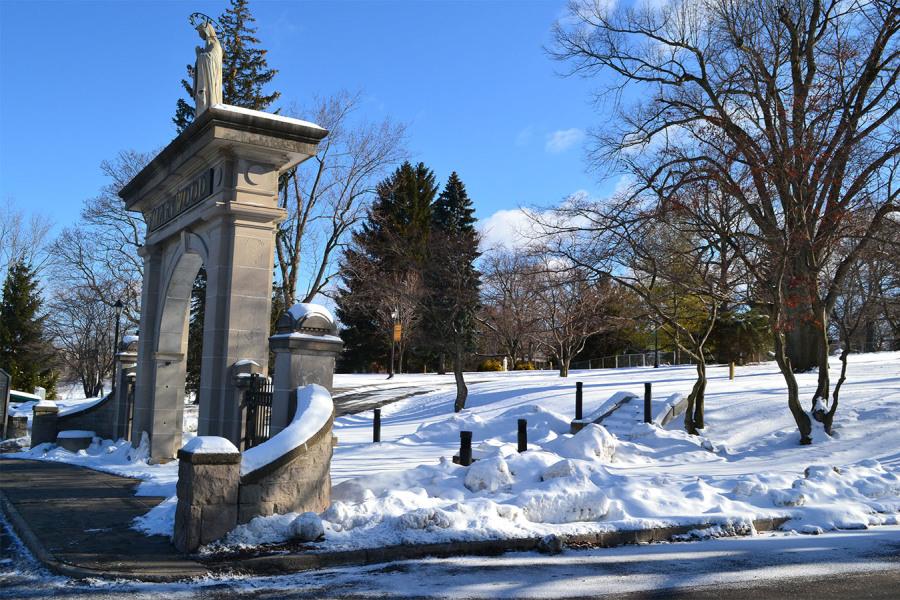Snowpocalypse 2015—or was it?
Photo credit/ Photo Credit/Alex Weidner
Despite the unimpressive accumulation of snow on the roads, the Marywood campus still saw significant snowfall.
January 31, 2015
Looking back at this year’s installment of “SNOWPOCALYPSE,” it’s safe to say that there was a good deal of hype put into the predictions and preparations for the impending snowfall. People may find themselves blaming everyone from a weatherperson to superintendents to Mayor de Blasio, depending on where they were during the “big storm.”
But why is there a need to pin blame when there’s a major flub in weather predictions? The superintendent of a public school is going to cancel school or issue a delay based on what forecasts are available. Does he risk the lives of thousands of students riding to school by bus and car, who may find themselves stuck in poor road conditions or even a ditch? Or does he play it safe, so that parents don’t have to worry about their kids making it to school safely, at the expense of maybe a day or two of education?
On a local scale, for instance, some were quick to criticize Marywood for failing to close on Monday, while most schools in the area had made that call.
While the Scranton area saw only a few inches of snow, and roads were slushy at worst, commenters on the Marywood Facebook page expressed their disagreement of the school’s decision to simply delay classes.
Then there’s New York City Mayor Bill de Blasio and N.Y. Gov. Andrew Cuomo, who shut down the streets, bridges, and subways of the city, making it a crime to be operating a non-essential, non-emergency vehicle after 11 p.m. on the 26th. After the storm made its pass at the city, falling short of the expected onslaught of snow, de Blasio faced much criticism on the decision. But, to paraphrase the mayor, better safe than sorry.
If authorities are only trying to keep the public safe, one shouldn’t blame them for taking these precautions. A patient wouldn’t blame his doctor for prescribing an antibiotic to prevent infection, which of course worked; that would be absurd. “Dr. So-and-so, I didn’t get an infection, but I’m filing a lawsuit because you told me to take this antibiotic just in case I did”. Yeah, sounds like a real logical solution.
You might be asking, “But can I still blame the meteorologist?”.
Weather forecasts can only be so accurate. Meteorologists use computer models and past patterns to determine the best predictions. These predictions are often pretty accurate, but they’re not going to be spot-on every time. Monday’s “blizzard” might not have hit New York as badly as predicted, and it certainly passed right by Scranton, but areas to the north still saw impressive snowfall—over 30 inches in Boston and parts of Connecticut.
When people tune in to the news to check out whether they should prepare for the worst or just put on their long johns and lace up their boots so they can shovel the car out and get to work on time, do they take the predictions with a grain of salt, or do they put that salt to use so they don’t slip on the front porch step?
There’s always a lot of hype when the weatherperson warns the public to stay indoors tomorrow, with people flocking to the supermarket to stock up on milk and snow shovels. No doubt the supermarkets love these influxes of shoppers.
But a day or two of intense snowfall shouldn’t always warrant a sudden urge to fill the fridge. It makes sense to be prepared for disaster, that goes without saying, but the hype is almost excessive.
Every time there’s a failed weather prediction, there’s no shortage of jokes mocking the weatherperson for having such an easy job, just guessing the weather. But we should probably be content with an educated guess from someone with a degree, as opposed to a coin flip or a geriatric with a feeling in his hip.






